Did you know that your diet has something to do with the way you feel through your cycle? Learn how to eat for your cycle and how some foods help with cramps, mood swings, and bloating!
You already know that for me, food is a type of treatment.
Whether it is to cure a specific issue or for overall health, what you eat has an impact on how you feel on a daily basis, even if you don’t might not realize it right now.
Why you should eat for your cycle
Just as other factors such as stress, mental health, or physical activity, nutrition affects your menstrual cycle too. Some foods eaten at some point during your cycle can indeed do good to your body. On the contrary, some foods might not work in your favor.
Usually, they will do good when they contribute to hormonal balance. However, some foods could disturb your hormones even more.
I discovered all of this magical information when I was looking into ways to balance my hormones and treat my painful periods naturally after going off the pill.
And let me tell you, diet did change the way I experience my whole cycle, obviously for the better.
We often think that we have no choice but to endure our menstrual cycle and the pain that comes with it, but that is not the case. Actually, you have control over many things, and your diet is one of them.
What to eat according to your cycle
If you don’t know what are the four phases of the menstrual cycle, I kindly invite you to read my article on this topic, you will learn so many things about yourself and your body.
Since our body goes through different phases, its needs vary throughout the month.
Not listening to those needs in certain foods and nutrients can result in pain, fatigue, inflammation, or any other symptoms each woman can experience.
Related post: Can cutting out dairy affect your period?
Menstruation phase
The first phase of the cycle, which begins on the first day of your periods, starts with a low level of hormones. The aim of this phase is to support menstruations and hormone production.
Dark chocolate, leafy greens, and whole wheat grains, which are rich in magnesium, help to relax the muscles and therefore to reduce menstrual cramps.
Red meat, pumpkin seeds, and eggs will help replenish iron levels that tend to decrease with blood loss.
Citrus such as oranges and lemon, bell peppers, and cauliflower, which are rich in vitamin C, contribute to optimal iron absorption.
Fatty fish (salmon, sardines, tuna), nuts, avocados, and chia seeds, which rich in omega-3s, help to reduce inflammation in the body.
Recipe ideas for this phase:
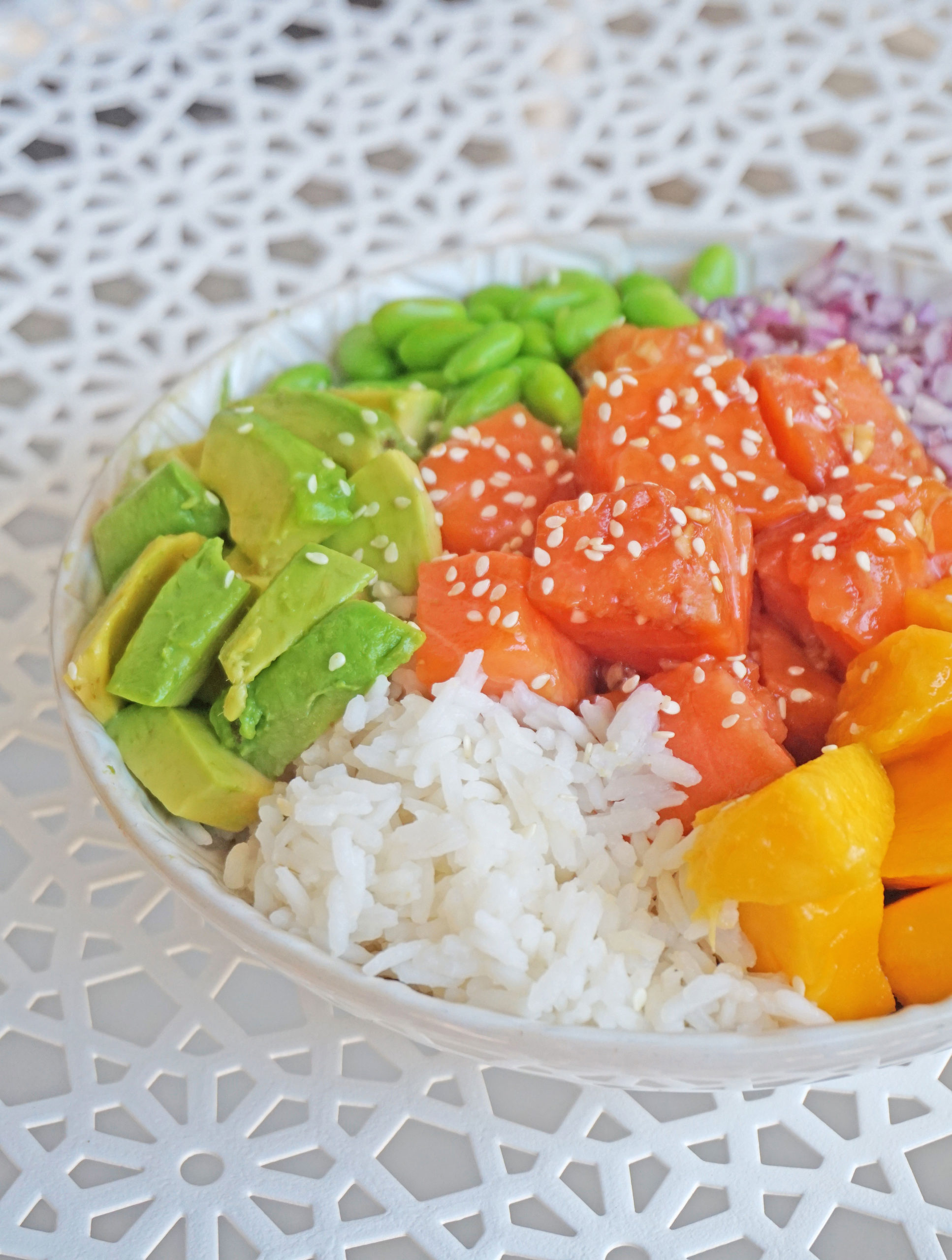
Post-menstrual phase
This phase starts after your periods and until ovulation. That is when your body starts producing estrogens again, which will bring you a boost in energy and a happier mood.
Estrogens, just like the other hormones, have positive impacts when the right amount is present in the body. The aim of this phase is to contribute to healthy levels of hormones.
Flaxseeds and soy, which are rich in lignans, help to keep a balanced level of hormones.
Legumes (lentils, beans, chickpeas), fruit, and whole wheat grains, which are rich in fiber, contribute to a healthy gut and to the elimination of excess estrogen.
Broccoli, radish, and all types of cabbage, which hold indole-3-carbinol, metabolize estrogen and keep hormones balanced.
Seafood, red meat, and nuts, which are rich in zinc, help to form a high-quality egg.
Yogurt (dairy or non-dairy), kefir, and fermented veggies, which contain healthy bacteria, contribute to a healthy microbiome and therefore to the elimination process of excess hormones.
Recipe ideas for this phase:
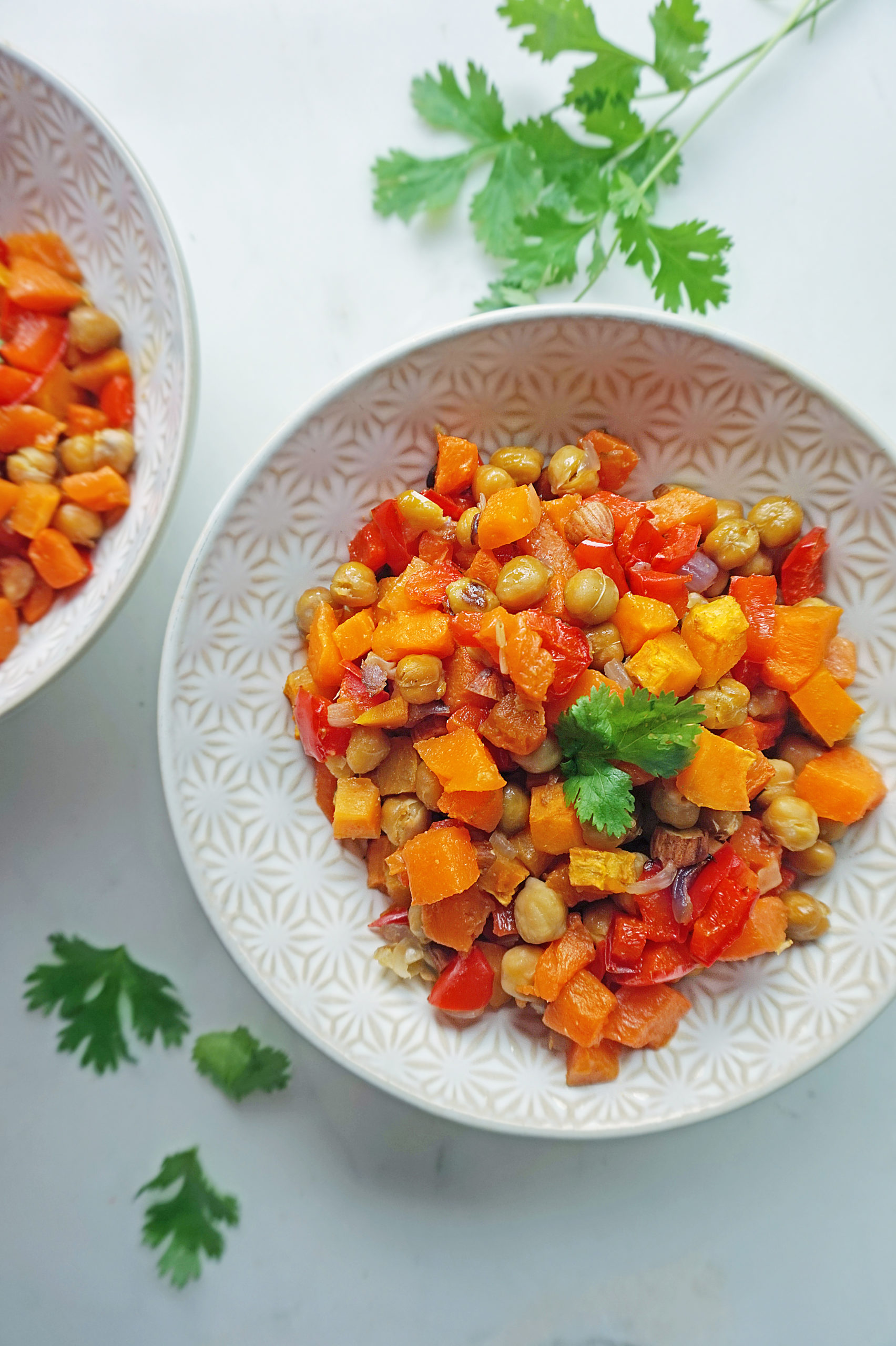
Ovulation phase
Ovulation is characterized by a peak in estrogen and testosterone and a rise in progesterone. The aim of this phase is to keep a healthy balance between all hormones.
Berries, vegetables, and nuts, which are rich in antioxidants, help to detoxify the body from excess hormones.
Broccoli, radish, and all types of cabbage, which hold indole-3-carbinol, metabolize estrogen and keep hormones balanced.
Oats, sweet potatoes, and legumes help to keep healthy blood sugar levels (which can be disrupted by hormone production) and fuel your body to compensate for higher energy expenditure.
Brazil nuts, oysters, and tuna, which are rich in selenium, prevent overproduction of estrogens.
Almonds, sunflower seeds, or hazelnut oil, which are rich in vitamin E, help the production of progesterone.
Recipes ideas for this phase:
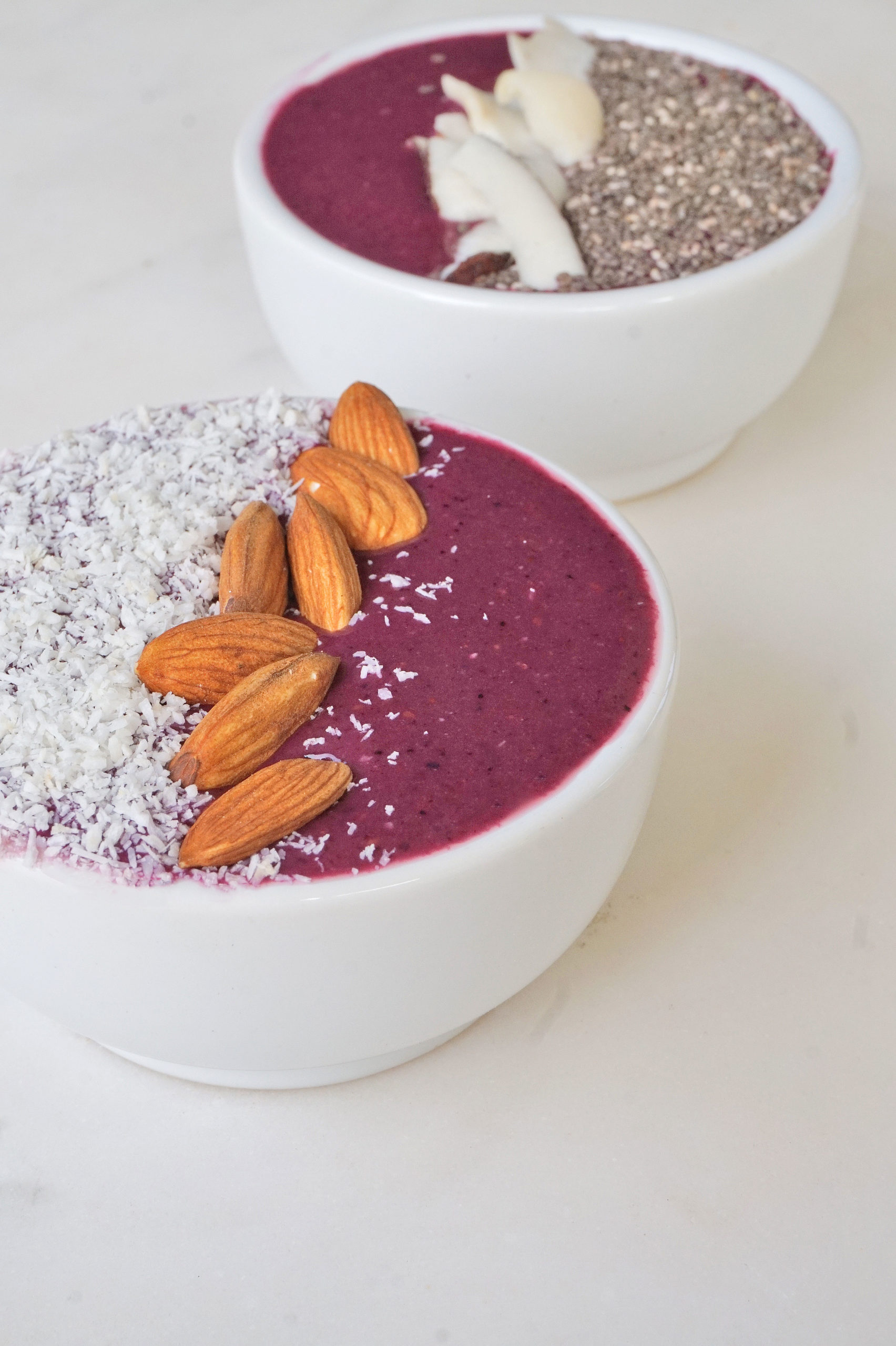
Luteal phase
Finally, after ovulation, there is a drop in hormones and the premenstrual syndrome starts to show up. The aim of this phase is to support hormones, reduce stress, and PMS.
Leafy greens, quinoa, and buckwheat stimulate serotonin production which helps to fight stress, sad times, and cravings.
Dark chocolate, spinach, and nuts, which are high in magnesium, help relax tight muscles and reduce menstrual cramps.
Oats, sweet potatoes, and legumes help to keep healthy blood sugar levels (which can be disrupted by hormone production).
Fatty fish (salmon, sardines, tuna), nuts, avocado, and chia seeds, which are rich in omega-3s, help to reduce inflammation in the body and therefore bloating.
Fruit, whole wheat grains, and, once again, dark chocolate, are perfect to calm down cravings 🙂
Recipe ideas for this phase:
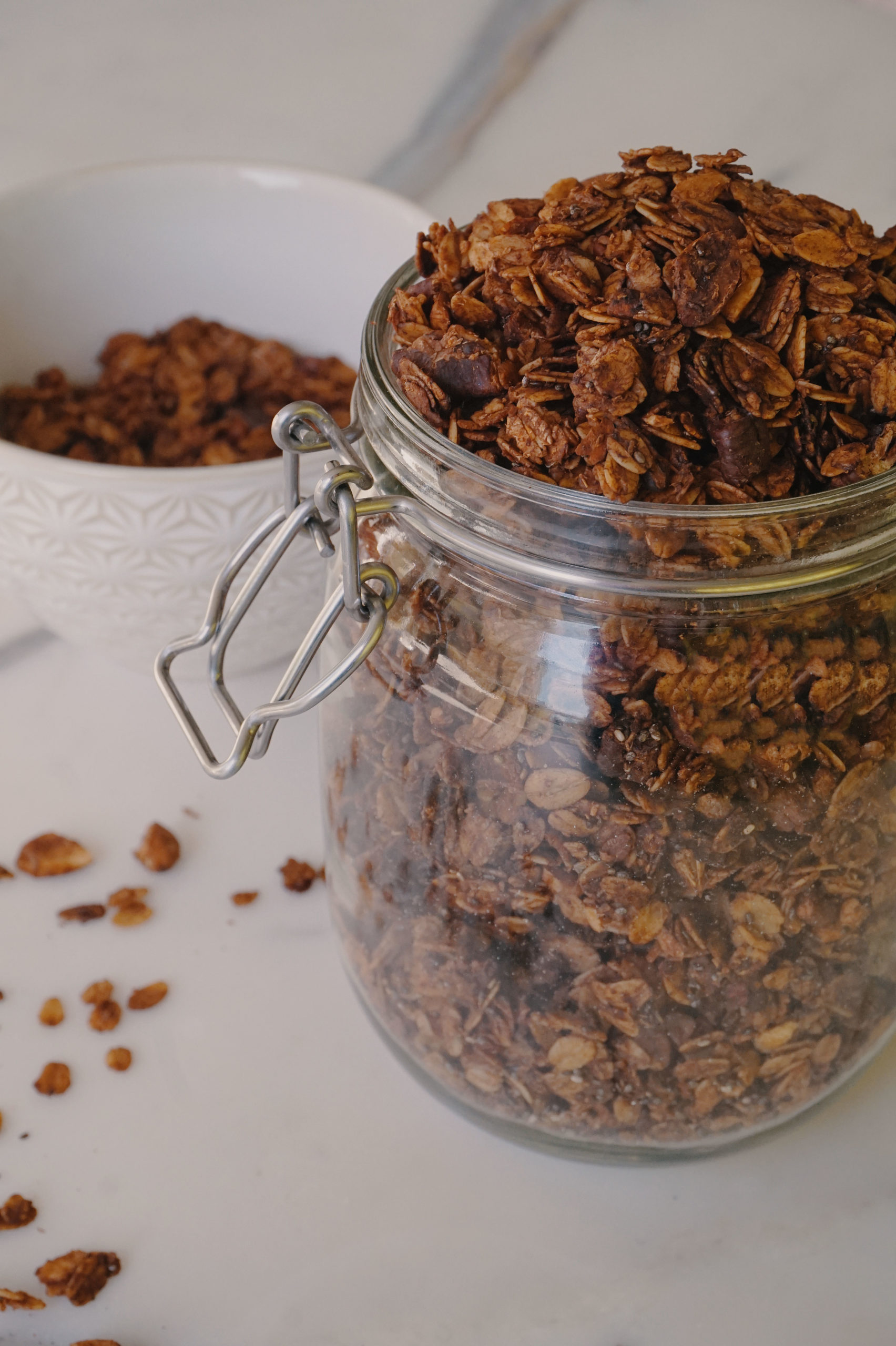
There you have my food recommendations on how to eat for your cycle! These are obviously exhaustive, but knowing the nutrients your body needs will enable you to guide you through your diet.
Essentially, it is always important to include lots of fruit and vegetables in your diet, just as legumes and seeds.
Seeds especially have been linked to hormonal balance and could actually help you get your hormones in check. If you’re interested, I wrote an article on How to balance hormones with seed cycling.
Finally, some foods are also to avoid, especially during luteal phase, since they will have a direct impact on PMS and menstruation. Try to avoid dairy, red meat, alcohol, coffee, artificial sugar, and salty food. These tend to increase inflammation and therefore, pain and bloating.
Eat for your cycle, but not only
As I told you, the way you eat has a huge impact on your cycle, but other factors come into play such as stress, mental health and physical activity.
If you struggle with hormonal imbalance, painful periods, and that your cycles are a real struggle to get through, the following blog posts I wrote might help you:
- How I balanced my hormones naturally
- How I finally got rid of painful periods naturally
- 7 Ways to enjoy your periods
What about you? Do you eat for your cycle on purpose or did you learn something new? Let me know in the comments below!
And if you need some food inspiration, come say hello on Instagram, I post healthy meals on a daily basis!
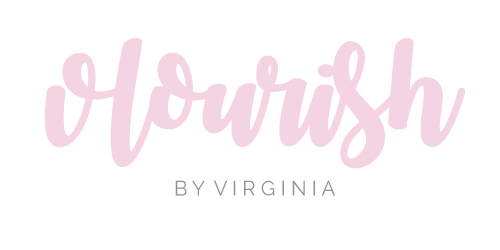
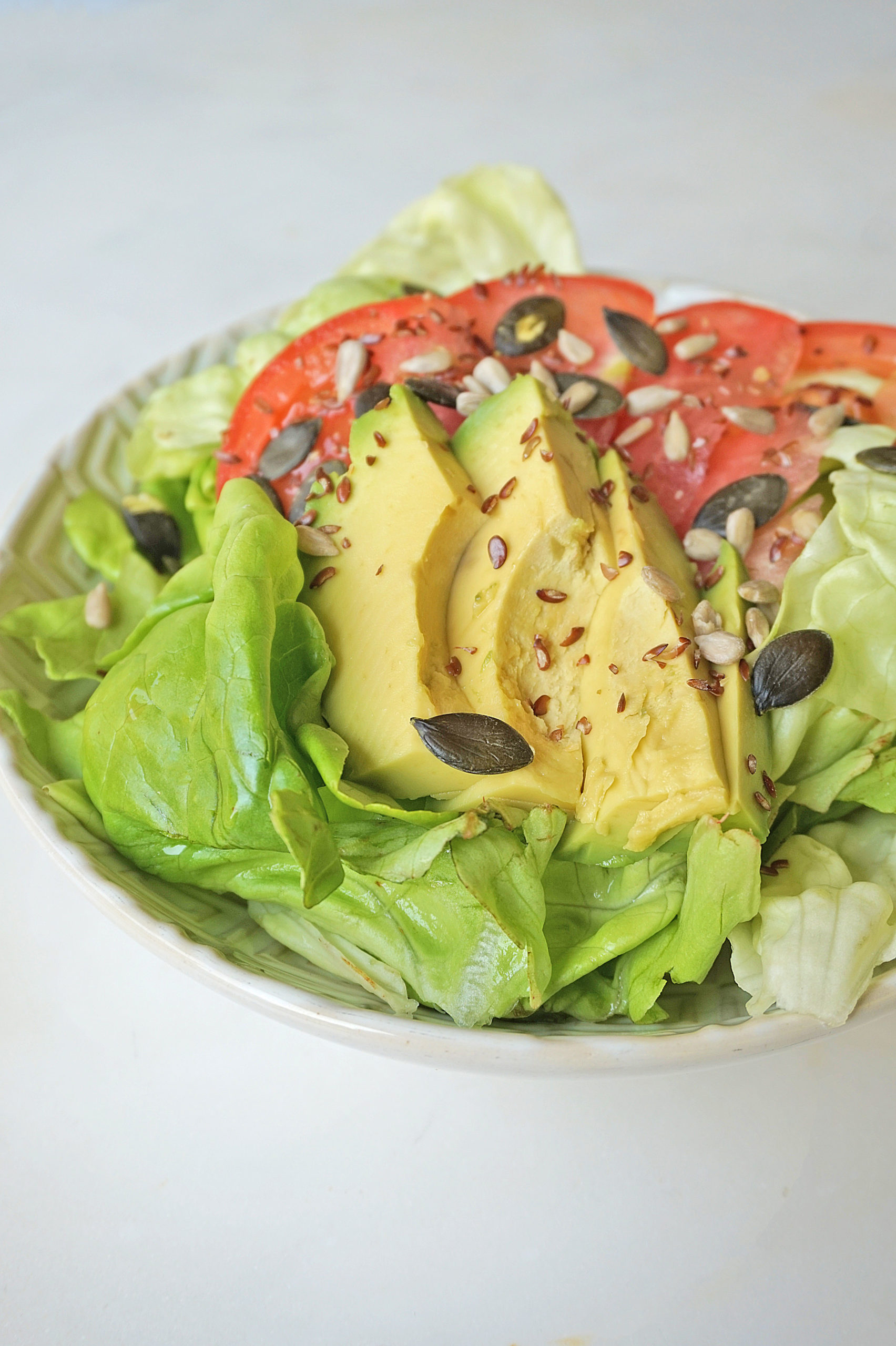

0 Comments